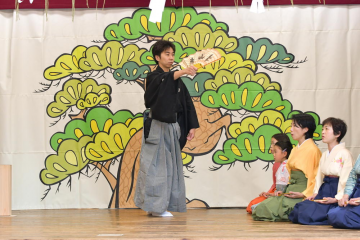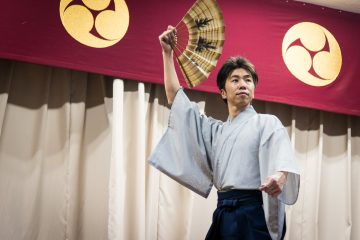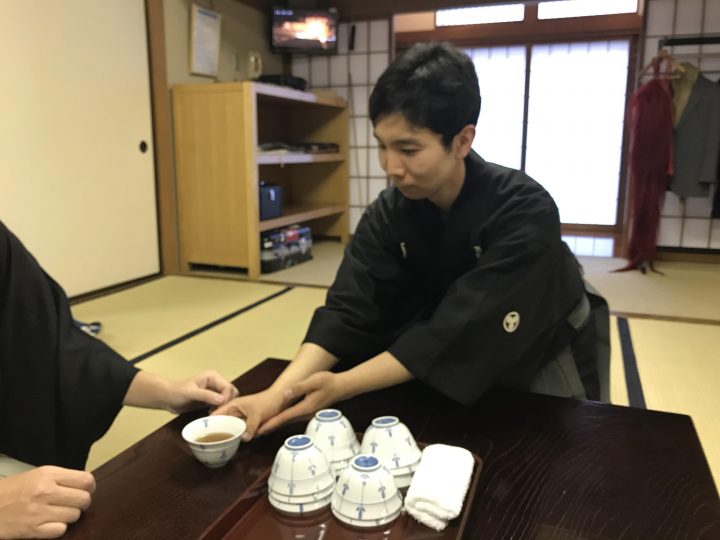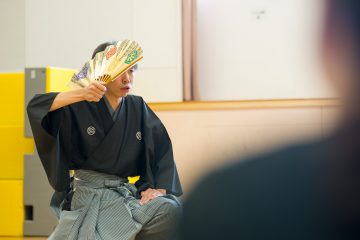Kanagawa Classic Project 2017 in Oiso

・This year's classic will be the Kabuki dance Nagauta "Tonoiso Yuen Harukoma". First of all, what is the difference between Kabuki dance and Japanese dance?

Tokitaro Hanayanagi
Tokitaro Hanayagi: The mother of Japanese dance is Kabuki. Simply put, the dance scenes of Kabuki are the origin of Japanese dance. During the Azuchi-Momoyama period, Izumo no Okuni started Kabuki dance, but she got bored with just the dance, so she added a play, which gradually became independent and is said to be the beginning of Japanese dance.
・So Japanese dance evolved from Kabuki. Tokitaro Hanayagi is a dancer of the "Hanayagi school," but what other schools of Japanese dance are there?
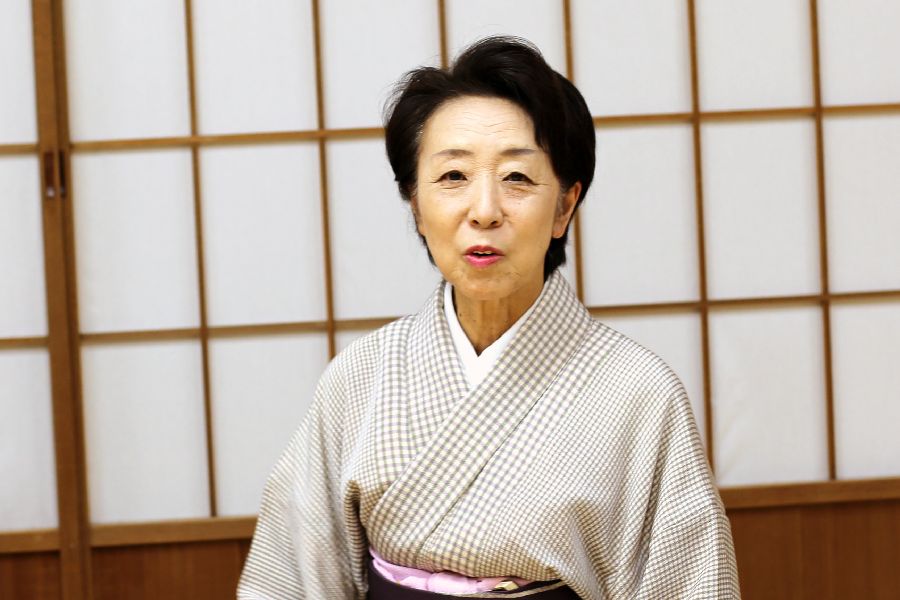
Nishikawa Senchiyo
Nishikawa Ogichiyo: There are about 120 schools that belong to the Japanese Dance Association nationwide, but if individual dancers are included, there must be a huge number of schools. Among them, the five major schools are Hanayagi, Fujima, Wakayagi, Nishikawa, and Bando. Among them, Hanayagi is said to have a relatively large amount of choreography, detailed, and gorgeous dance. In addition, Nishikawa has characteristics such as large choreography and a classical style, as it was created for Kabuki actors.
・What made you decide to take up Japanese dance, Tokitaro Hanayagi?
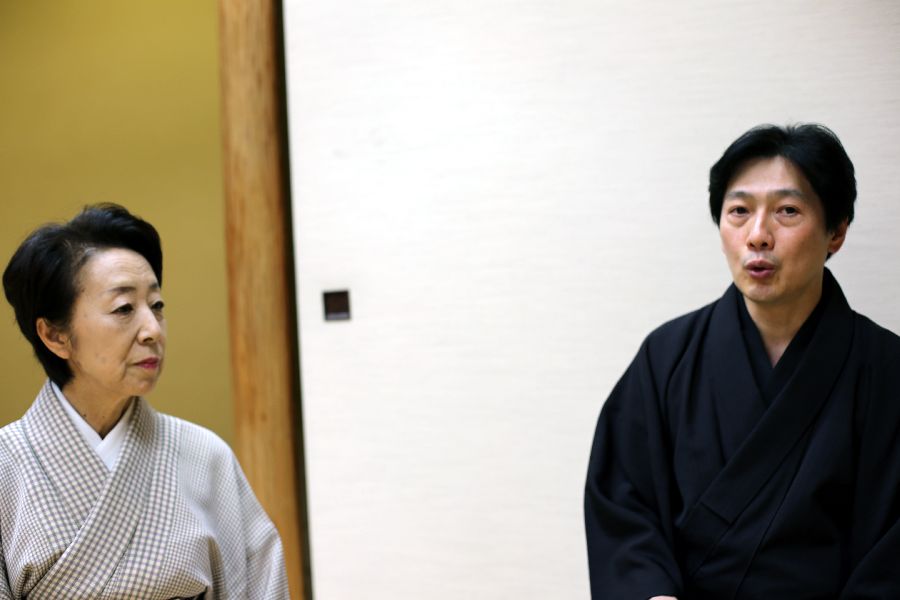
Tokitaro Hanayagi: I think it started when I was 4 years old and my parents took me to see a play. It was about 50 years ago. At that time, it was normal for women to play the koto or do classical arts. Flower arranging and tea ceremony were not something special, and I learned them from a teacher in my neighborhood. In modern terms, I think I naturally got into Japanese dance in the same way, like trying to do hula dancing or aerobics.
・What kind of activities do you usually do?
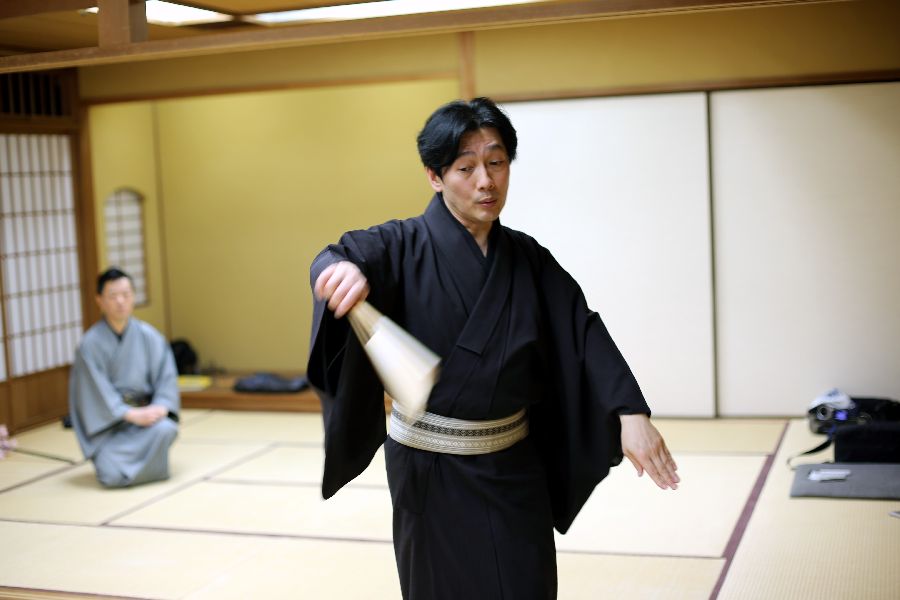
Tokitaro Hanayagi: I teach dance at high schools, I take lessons, I think about choreography and the composition of recitals, and I also dance. Recently, when I talk to parents, I feel that there are many children who have little emotional contact. The number of children is decreasing these days, and although this is not limited to Japanese dance, I think it is important for there to be a rehearsal space where people of all generations can interact. I think that if you live a normal life, it can be difficult to find your place.
・It's wonderful that the rehearsal space becomes your home. I think that students and small children have few opportunities to come into contact with traditional performing arts unless their parents give them the opportunity.

Tokitaro Hanayagi: In Japanese dance, you can learn not only dance but also etiquette while practicing. There are many things that you will naturally pick up if you practice from a young age, such as standing beautifully, dancing, using a folding fan, sitting upright and bowing, etc. The Japanese Dance Association also puts effort into nurturing children, so we incorporate old Japanese games into our practice. I think it is a great thing that this Re-Classic is able to provide young children with an opportunity to see classical arts.
-What is the appeal of Japanese dance?
Tokitaro Hanayagi: For me, it's so familiar that I don't really understand it, but it's not always the case that a man plays a male role; he can also play a female role. I think I find it appealing that you can transform yourself by wearing various costumes and playing a role. Also, it's good that there is a place where you can let your mind free, such as talking to your friends about worries that you can't easily talk about at home at the rehearsal hall.
・From here, I would like to ask you about the repertoire for the classical piece. What is the content of the Nagauta piece "Tonoiso Yuen Harukoma"?

Tokitaro Hanayagi: Since we're holding the event in Oiso this year, we decided to cover the famous Kamakura period tale of the Soga brothers' revenge, which took place mainly in Odawara and Oiso. This is a story that is considered one of the three great vendettas in Japan, and it tells the story of Soga Juro and Goro, whose father was murdered, and their revenge. The name of the older sister of the Soga brothers is "Ninomiya", Juro's lover is "Oiso no Tora" and Goro's lover is "Kewaizaka no Shosho", so there are many place names around Oiso that make it easy for everyone to relate to.
・Please tell us exactly what the highlights are.
Tokitaro Hanayagi: At Ri-Kenten, we assume that there will be people who have never seen Japanese dance before, so we will make the choreography, costumes, and props gorgeous and luxurious. For now, we will be performing "The Tiger of Oiso" and "The Shosho of Keshozaka," lovers of the Soga brothers, in order to capture the audience's attention with only female roles, which we hope will impress them. Even if you don't understand the story, I think you will enjoy watching it, so don't overthink it and come and see it with your small children.
I am a travelling man and the presenter MITSUMI, as the daughter of an innkeeper at Oiso-juku, will be giving some kind of explanation before the show to make it easy to understand, so I think it will be an enjoyable and easy-to-understand experience.
・From here on, we would like to ask the performers about their enthusiasm for Re-Classics.
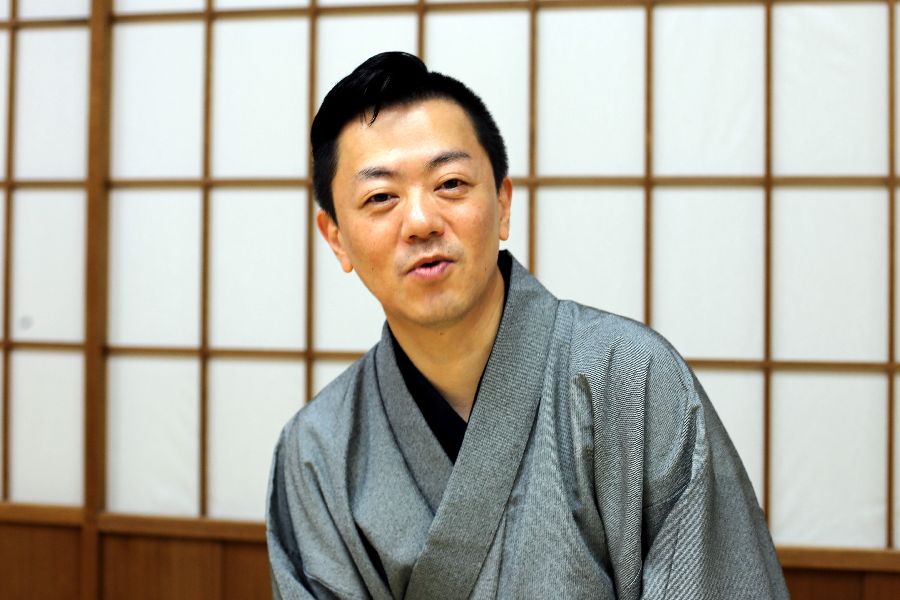
Izumi Tokuyasu (Asahina Maimaizuru)
I want to make it a performance that can be enjoyed without thinking too hard about it. The area around Oiso is a treasure trove of history, so I think it is very meaningful to perform Sogamono in that place. This time, I will replace it with a female one, because I want everyone to see something glamorous. If you search online for "The Tiger of Oiso," the lover of the Soga brothers, or "The Shosho of Keshozaka," you should be able to find it easily. Since we are in the age of the Internet, please do a search. We hope that it will be an opportunity for people to learn about the history.
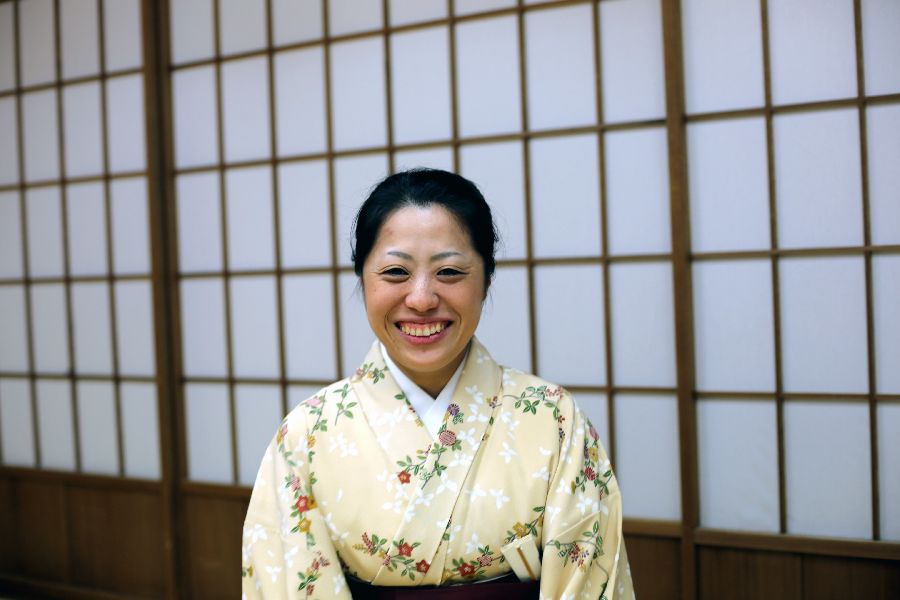
Hiroe Iwai (The Harukomare Ochou, actually the Shogun of Keshozaka)
I went to see Ri-Kenten when it was held at Oyama in Isehara, so I was surprised that I would be dancing this year. My mother loved dancing, but she couldn't do it because of illness. So I wanted to teach my children, and I've been dancing since before I was old enough to understand, and this year marks my 33rd year. This is my first time performing with this group, so I'll study and dance as hard as I can. I'd be happy if as many people as possible become interested in Japanese dance through Ri-Kenten.
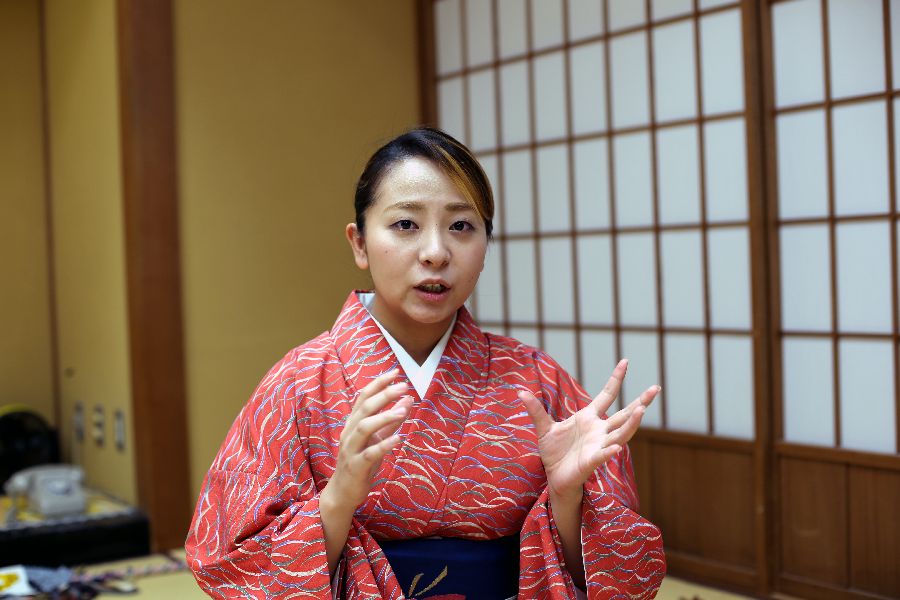
Izumi Shuusaka (The Decoy Selling Spring Horses, Actually the Tiger of Oiso)
The day of the Classical Dance is also the day the Oiso Shukuba Festival is held. I think there are many people who come to Oiso for reasons other than to see the dance. My grandfather was a Japanese dancer, and he took me to see it when I was 5 years old, and I have been doing it for 20 years. It is meaningful to perform content that is familiar to Oiso and Ninomiya in Oiso, but since the classical and contemporary works are collaborating, I would be happy if people could understand the form of Japanese dance in various broad senses.
Although she will not be performing this time, junior high school student Itakura Ryuyo, who came to help out at the rehearsal studio, told us about the appeal of Japanese dance.
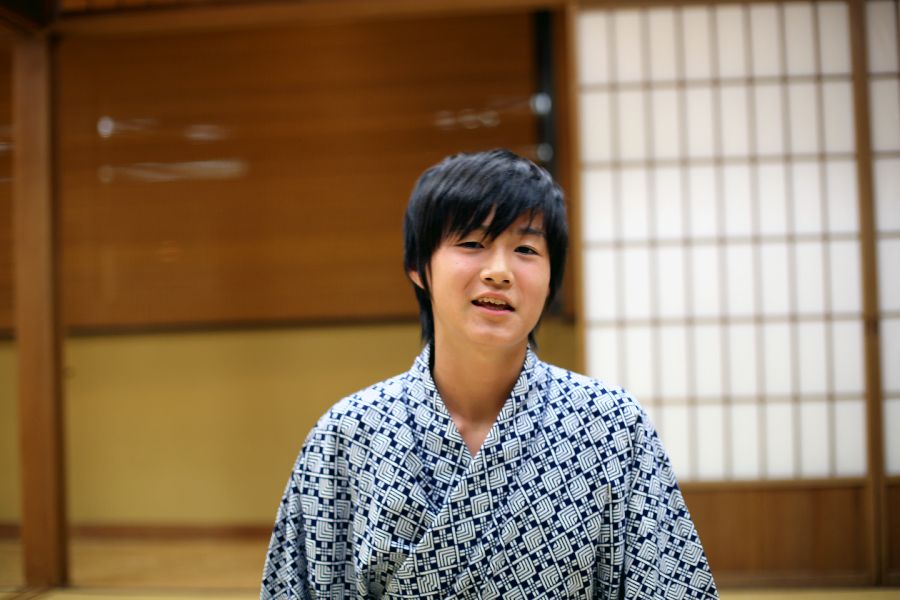
Ryusei Itakura
Recently, robots, AI, and other machines are becoming more common in the world. I think Japanese dance is unique, has a depiction of the heart, and has an expressiveness that robots can never achieve. I think Japanese dance is wonderful precisely because it is a classical art form with richness of the heart and delicate movements that only humans can achieve.
On the day, in addition to the kabuki dance Nagauta "Tonoiso Yuen Harukoma," there will also be a project called "Hanazakari no Mori," a collaboration between contemporary music and Japanese dance. The choreography and hairstyles will also be arranged in a modern style. It will be exciting to see how the Japanese dance that has continued since the Edo period and contemporary music will be intertwined and expressed. To conclude the classic performance, a classic fireworks display from the Edo period will be launched. Please enjoy the world of traditional performing arts to the fullest in Oiso this year.
Future activities
The 53rd Kanagawa Prefectural Famous Dance Festival
November 23rd (Wednesday/Holiday) 11:30~
Venue: Kanagawa Prefectural Youth Center Hall
Price: 6,000 yen (unreserved seating)
Inquiries: 0467-46-2212 Japanese Dance Association Kanagawa Branch Office
http://nihonbuyou.or.jp/
